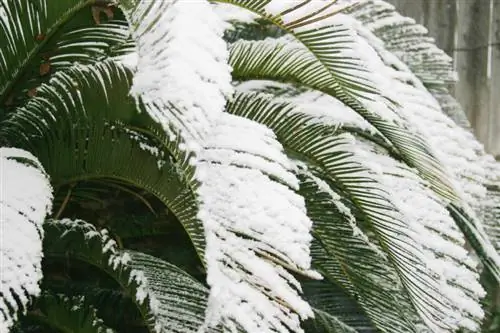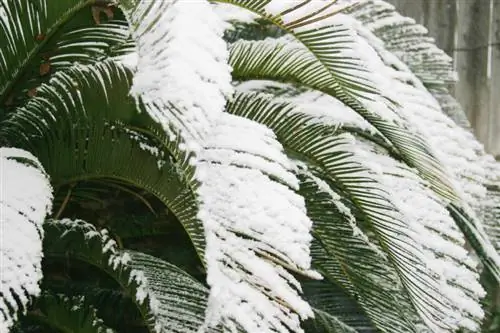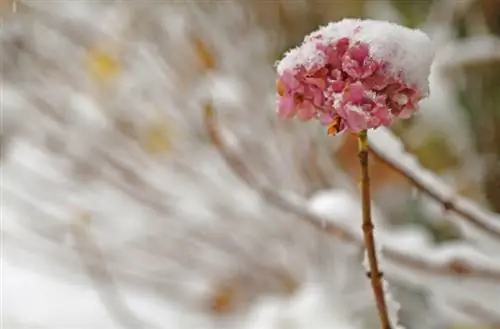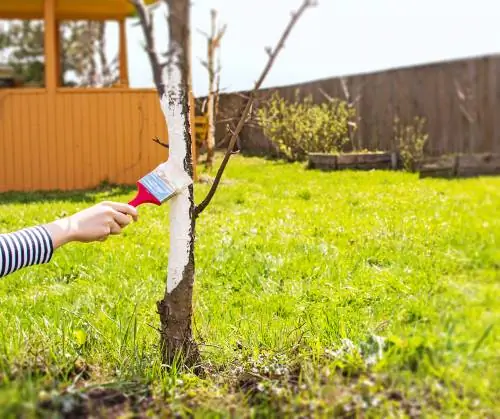- Author admin [email protected].
- Public 2023-12-16 16:46.
- Last modified 2025-01-23 11:20.
Anyone who is interested in cycad - no wonder, because it is wonderfully beautiful with its long, overhanging fronds - should think about how it can be protected from frost before buying and planting it.

How do you protect cycads from frost?
Cycedony ferns are frost-sensitive plants and generally cannot tolerate temperatures below 10°C. However, some species, such as Cycas panzhihuaensis and Cycas revoluta, can withstand colder temperatures down to -16°C orTolerate -8°C. To avoid damage and frostbite, cycads should be overwintered in cool, frost-free rooms at 5-7°C.
What happens when there is frost?
It basically depends on the type you get. Most cycads are already offended when temperatures drop below 10°C. Others, on the other hand, can cope with temperatures around 0 °C for a short time.
In general, it can be said that the cycad is sensitive to frost and is not or only poorly winter-hardy in our Central European regions. This tropical plant reacts to frost with frostbite. The roots freeze and eventually the entire plant dies. It won't sprout again
Species and their temperature minimum
The following are species that tolerate frost to a certain extent. But: It is better not to challenge the plants and their minimum temperature. It's better to protect them before the thermometer shows their minimum temperature!
- Macrozamia stenomera (-10 °C)
- Macrozamia diplomera (-8 °C)
- Macrozamia platyrhachis (-8 °C)
- Macrozamia macdonnellii (-6 °C)
- Macrozamia reducta (-6 °C)
- Dioon argenteum (-4 °C)
- Macrozamia longispina (-4 °C)
- Cycas media (-3 °C)
- Cycas panzhihuaensis (-16 °C)
- Cycas revoluta (-8 °C)
Procedure when winter approaches: Settling in
It is best to overwinter cycads. This should be noted:
- move in when the first night frosts are expected
- Choose a room with temperatures between 5 and 7 °C
- the warmer, the more light is necessary
- not warmer than 15 °C (otherwise the rest period will be disturbed)
Care during and after wintering
A cycad also needs care during the winter. Important: Do not fertilize it! Watering should be sparing. It is good if the fronds are sprayed with lime-free water. Last but not least, the cycad should be checked regularly for pests such as spider mites.
After overwintering, the cycad is relocated. It can be repotted in spring if necessary. Otherwise, it is lightly fertilized and slowly acclimated to the sun again to avoid sunburn.
Tips & Tricks
Make sure that small children and pets do not have access to the wintering location. The cycad is poisonous!






